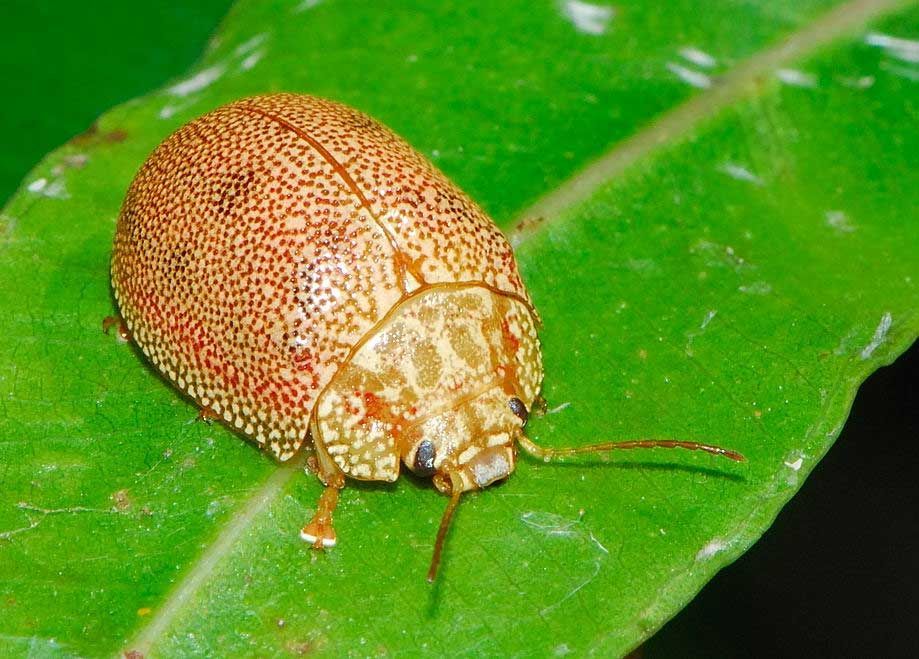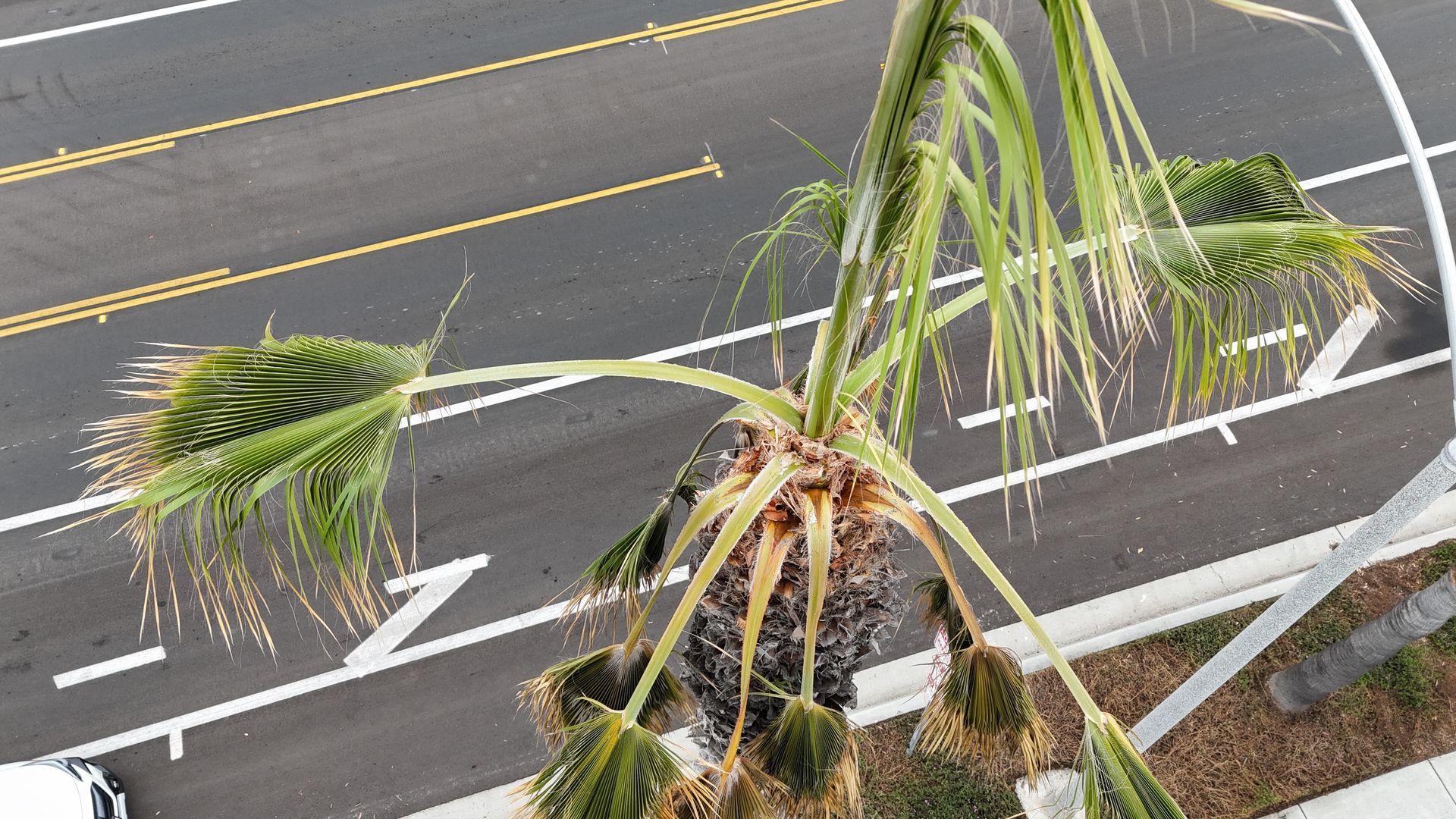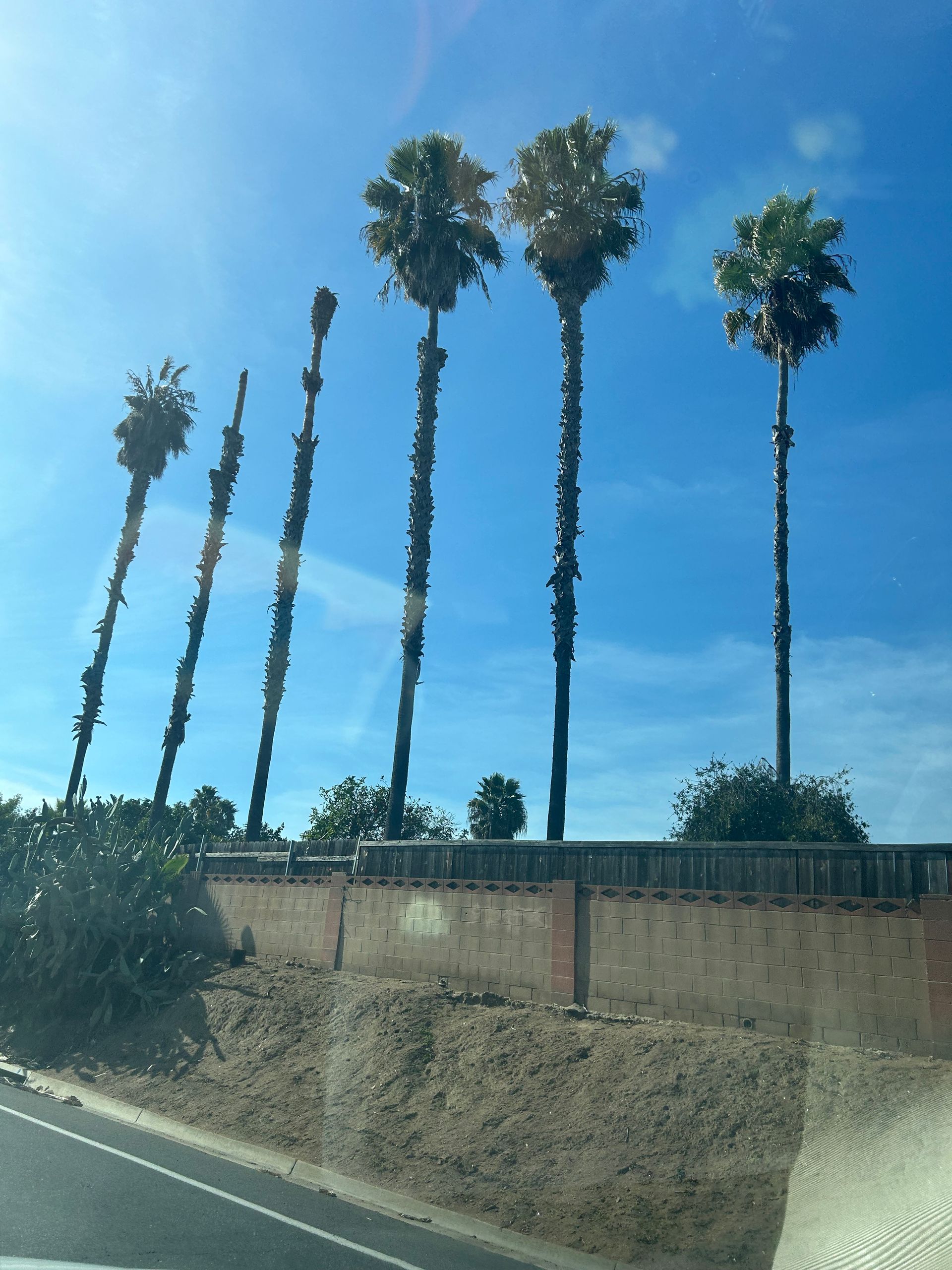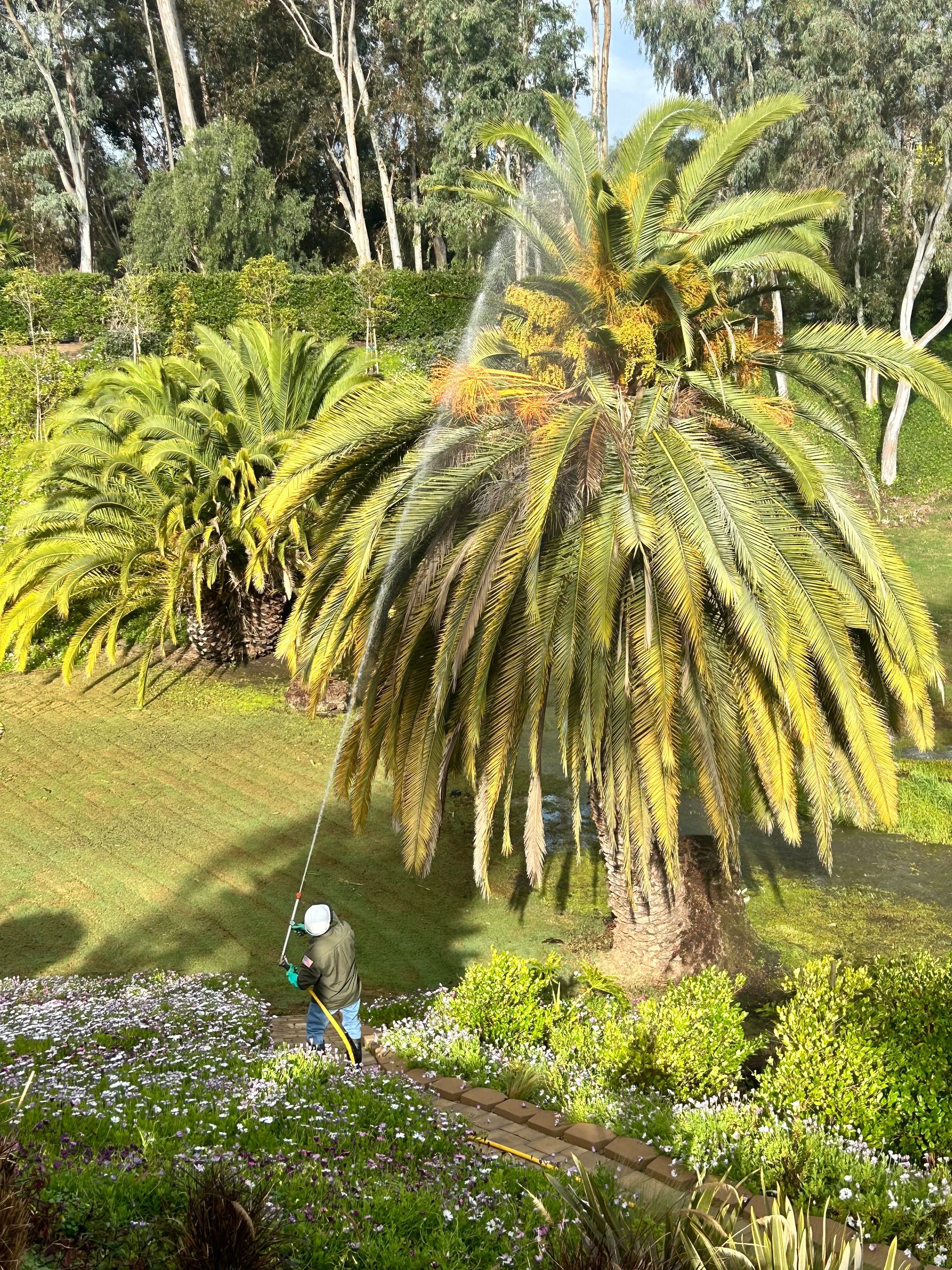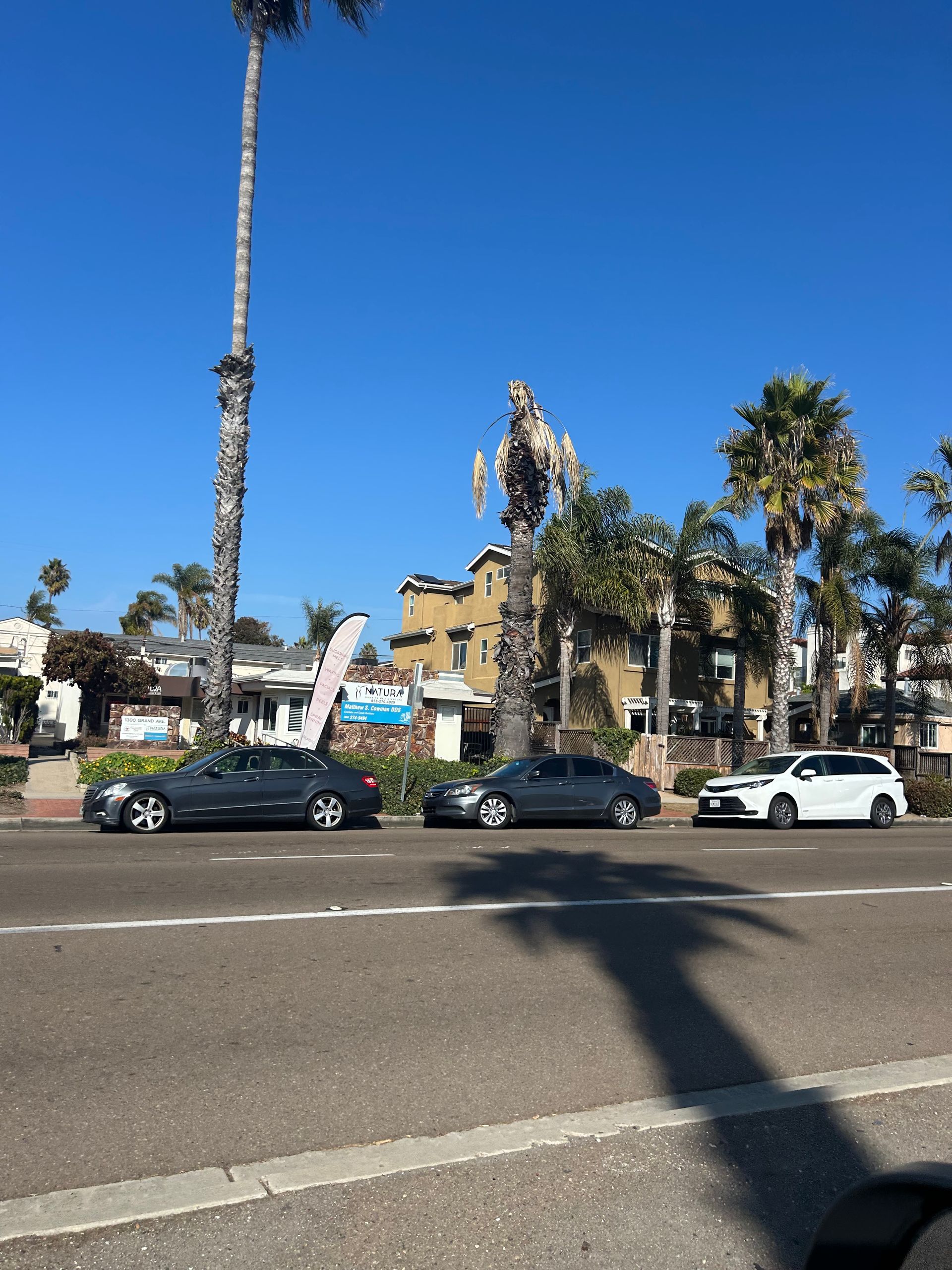Pest Notes: Vol. 4 – Palm Trees
Palms are most closely associated with grass. They are “monocots.”
Woody trees are “dicots.”
Monocots have one point of growth, while dicots have two. With their second growing point (cambium), dicots can compartmentalize decay, regenerate woody tissue, respond to attack, etc.
Palms, or monocots, do not have that capability. They have a single point of growth called the “meristem” also commonly called “spear-growth.” This is the main growing point of a palm – the center of its head. They do not expand radially, or get “thicker.”
Several diseases associated with palm trees are also associated with sudden tree failure. I have walked into backyard with a queen palm flopped on the ground. The entire crown, and down the stem, covered in the spores and dust of pink rot.
South American Palm Weevil feeding has resulted in sudden crown drop in Canary Island date palms.
Trunk rot has resulted in many a palm “head” falling to a stony street below.
We have also found pink rot in Mexican fan palm (Washingtonia robusta) which have been coined “bullet-proof” by many a sales arborist.
While the future may seem bleak for our adored palm trees, it is not.
Being that palms cannot compartmentalize decay or pathogenic attack, nor can they re-generate trunk tissues due to a lack of secondary growth or cambium, diseases can spread easily in palms. ESPECIALLY if spikes are used to climb, and/or live tissue is cut into and removed.
Secondly, diseases spreading easily in palms are largely associated with sudden failure (whether it be sudden death or collapsing).
HOWEVER…these diseases are opportunistic. That means they host only stressed or compromised palm trees. In order to prevent/correct/minimize stress:
- 2-liquid feedings annually with palm specific nutrition and microorganisms known to colonize on root systems to prevent soil diseases, and break down cell-walls of soil pathogens. Liquid because palms do not take up granules. Granules sit on the top layer of soil almost indefinitely. They sterilize a soil by chemical run off. They are a waste of money and actually work to a customers detriment. (also recommended by International Sociaety of Arboriculture calling for a MINIMUM of 2-liquid feedings).
- Remove ONLY dead fronds (brown to the base) and fruit. Yellow fronds shall be retained. Clearance objectives can be achieved by “shortening” a frond, rather than removal.
- NEVER use spikes to climb a palm tree. If a tree climber was at some resort or even a residence using his spikes on an infected group of palms, he is bringing that straight into the vascular tissue of your palm tree as he heaves his heels and spikes into the living, conductive tissue to climb.
DID YOU KNOW? Palm trees grow stronger with age! Some folks look up and see a dangling stick 100-ft into the sky and think “THIS THING IS COMING DOWN TODAY OR TOMORROW AND I WILL NOT STAND BY HERE AND WATCH!” But that is not the case. As they reach to the sky, the cells and lignin in palms elongate and mature. Their stems are equated with the strength of steel or concrete columns.
Palm trees grace our coastal and inland areas. While they may not provide the largest amount of canopy cover, they are perfect accents and jewels when placed strategically in a landscape. They line the entrances of the grandest hotels, and dappled throughout estates, line driveways, parkways, surround pools, and more.
Take care of them correctly and they will be cherished for years to come.
Call TreeLife CA! Our Urban Forestry Experts give you peace of mind through proper treatment protocol, education and true tree stewardship.

